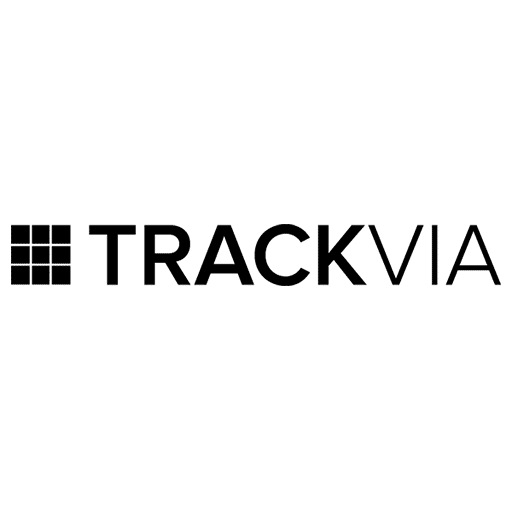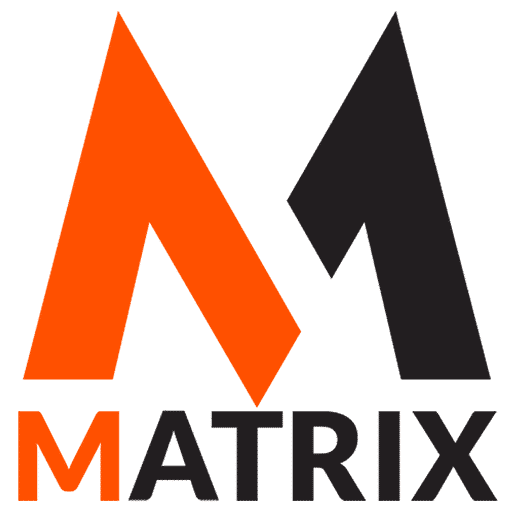Core Web Vitals and Website Speed: A Complete Optimization Strategy
Learn About Core Web Vitals and Website Speed: A Complete Optimization Strategy.
The Evolution of Web Search
Imagine a world where waiting 10 seconds for a webpage to load was the norm. A decade ago, this scenario was not uncommon.
However, in today’s fast-paced digital environment, a delay of just a few seconds can mean the difference between retaining a visitor and losing them to a competitor.
Studies have shown that a 1-second delay in page load time can cause a 7% reduction in conversions (MatrixLabX, 2025). This dramatic change highlights the crucial role of website performance in enhancing user experience and improving search engine rankings.
Understanding Core Web Vitals
Introduced by Google in 2020, Core Web Vitals are specific factors that Google considers important in a webpage’s overall user experience.
These vitals are part of Google’s “Page Experience” signals, which measure how users perceive the experience of interacting with a web page beyond its informational value.
Core Web Vitals comprise three primary metrics: Largest Contentful Paint (LCP), which measures loading performance; First Input Delay (FID), which assesses interactivity; and Cumulative Layout Shift (CLS), which evaluates visual stability (Google, 2020).
These metrics represent a significant shift in how search engines evaluate websites, emphasizing the content and the quality of the user interaction.
As search engines evolve, optimizing these vital elements has become crucial for website owners who wish to remain competitive in the digital landscape. This brings us to our thesis:
Core Web Vitals and Website Speed: A Complete Optimization Strategy—This article explores comprehensive strategies to enhance website performance, focusing on Core Web Vitals, thereby improving search rankings and user engagement in a rapidly changing digital world.
Why is Largest Contentful Paint (LCP), which measures loading performance, important?
Largest Contentful Paint (LCP) is important because it measures how quickly the largest content element on a webpage loads, which significantly impacts the perceived loading speed and overall user experience.
A good LCP ensures that users see meaningful content quickly, reducing frustration and bounce rates. It is a key metric for demonstrating that a website is fast and responsive.
Google Ads Checklist – Download Now! 🚀
Struggling to get the most out of your Google Ads? 🔥 Download our Google Ads Optimization Checklist and take your campaigns to the next level!
✅ Maximize Clicks & Conversions
✅ Lower Your Cost-Per-Click (CPC)
✅ Improve Ad Quality Scores
✅ Target the Right Audience
This free checklist will help you set up, optimize, and scale your Google Ads campaigns for maximum ROI.
Why is First Input Delay (FID), which assesses interactivity, important?
First Input Delay (FID) is important because it directly measures how quickly a web page responds to user interactions, like clicking a button, tapping a link, or entering text in a field — from the user’s point of view.
Here’s why it matters:
🚀1. It’s a User-Centric Metric
FID tells you how long a user has to wait before the browser can respond to their first interaction. If it takes too long, the site feels slow, even if it visually looks ready.
2. It Reflects Perceived Performance
Users judge a site’s speed by how fast it responds to their actions, not just how fast it loads. FID is one of the best ways to understand how “interactive” your site feels.
3. Poor FID Hurts Engagement & Conversions
A high FID (bad) frustrates users — especially on mobile. This often leads to:
- High bounce rates
- Lower conversion rates
- Reduced customer satisfaction
4. It’s a Core Web Vitals
FID is one of Google’s Core Web Vitals, which means it’s a ranking factor for search. A poor FID can hurt your SEO and visibility in search results.
5. It Highlights JavaScript Bloat
Heavy or poorly optimized JavaScript is the primary cause of most FID issues. Monitoring FID helps developers pinpoint and resolve these delays, thereby improving overall performance.
In summary, FID is crucial because it provides users with control and confidence that your site is responsive, fast, and reliable. And that’s essential for UX, SEO, and business performance.
Why is Cumulative Layout Shift (CLS), important?
Cumulative Layout Shift (CLS) is important because it measures the visual stability of a webpage.
A good CLS ensures that elements on the page do not unexpectedly shift or move while a user is trying to interact with it.
This unexpected movement can lead to frustrating user experiences, such as accidentally clicking the wrong button or losing your place while reading.
CLS is crucial for the following reasons:
- Improves User Experience: Stable layouts prevent accidental clicks and disruptions, making browsing more enjoyable and efficient.
- Reduces Frustration: Unexpected shifts can be jarring and frustrating, especially on mobile devices.
- Enhances Accessibility: Users with motor impairments or those who rely on assistive technologies may find layout shifts particularly problematic.
- Impacts Engagement: Pages with high CLS scores often lead to increased bounce rates and decreased engagement.
- Affects SEO: CLS is a Core Web Vital, meaning it is a ranking factor for Google search. A poor CLS can negatively impact your website’s visibility in search results.
In essence, CLS ensures that websites are visually predictable and stable, contributing to a positive and reliable user experience.
Unlock Your Website’s Full Potential with a SEO Fix Program
Even the best websites can struggle without robust SEO. Our $2,500 SEO Quick Fix Package is crafted for businesses that demand fast, measurable results. We start with an in-depth SEO audit to diagnose your site’s performance, then implement five targeted optimizations to boost your rankings and drive more traffic.
Core Web Vitals and Website Speed: A Complete Optimization Strategy
In today’s digital landscape, user experience is paramount, and Core Web Vitals play a crucial role in enhancing that experience. However, what are Core Web Vitals?
They are a set of specific metrics that Google uses to quantify the performance of a web page, focusing on three main areas: loading performance, interactivity, and visual stability.
These metrics—Largest Contentful Paint (LCP), First Input Delay (FID), and Cumulative Layout Shift (CLS)—help determine how quickly and smoothly users can engage with your website.
So, who should care about Core Web Vitals? Understanding and optimizing for these metrics is essential if you own a website, manage digital marketing, or oversee web development.
Google has incorporated Core Web Vitals into its ranking criteria, meaning better performance can lead to improved search engine visibility, increased traffic, and higher conversions.
Now, where do you start with optimization?
Conduct a Core Web Vitals assessment using tools like Google PageSpeed Insights or Lighthouse. These tools provide detailed analyses of your website’s performance, highlighting areas for improvement.
Finally, how can you improve your Core Web Vitals and website speed? Optimize your images and resources by compressing them to reduce loading times, implement lazy loading to defer offscreen images, and ensure that your server response times are minimized.
Additionally, employ performance best practices, such as minimizing CSS and JavaScript file sizes, and using a content delivery network (CDN) to distribute content efficiently.
By strategically addressing these factors, you can enhance your website’s performance, resulting in a better user experience and improved rankings, ultimately driving more success for your online presence.
Imagine you are hosting a grand dinner party, aiming to dazzle your guests with an exquisite dining experience. Core Web Vitals and website speed in the digital world are akin to the impeccable timing and presentation of each course in your dinner.
Just as guests at your party would be disappointed if their meal arrived cold or if there were long waits between courses, visitors to your website will feel frustrated if pages load slowly or encounter layout shifts and unresponsive elements.
To ensure every guest leaves your dinner party impressed, you meticulously plan each dish’s preparation and serving sequence, adjusting for any hiccups.
Similarly, optimizing your website’s Core Web Vitals involves fine-tuning your site’s load time, interactivity, and visual stability.
This strategic optimization ensures that every visitor to your site experiences the smooth, engaging, and fast performance that keeps them returning for more, just as your dinner guests would eagerly anticipate your next invitation.
Engage with this strategy, and watch as your site’s performance enhances visitor satisfaction and loyalty, much like a perfectly executed dinner party wins the hearts of its guests.
Your Blueprint for SEO Success in 2025
Whether you’re a business owner, marketer, or seasoned SEO professional, this guide is tailored to give you a competitive edge in the evolving digital landscape. Get SEO Pricing.

Challenges and Opportunities: Core Web Vitals and Website Speed Optimization
Importance of Core Web Vitals
Core Web Vitals are essential metrics introduced by Google that measure a website’s real-world user experience, focusing on loading performance, interactivity, and visual stability.
These metrics—Largest Contentful Paint (LCP), First Input Delay (FID), and Cumulative Layout Shift (CLS)—have become critical for website ranking in search results.
As users increasingly expect fast and responsive websites, the importance of optimizing for Core Web Vitals cannot be overstated.
Challenges
- Complexity of Measurement: Understanding and accurately measuring Core Web Vitals can be challenging. Site owners must navigate various tools, such as Google PageSpeed Insights, Lighthouse, and the Web Vitals extension, and accurately interpret the data to identify specific areas for improvement.
- Technical Limitations: Many websites are built on complex architectures that can hinder performance. Issues like large media files, inefficient JavaScript, and slow server response times can complicate optimization efforts.
- Resource Allocation: Optimizing for Core Web Vitals often requires dedicated time and technical expertise. Smaller businesses or teams may struggle to prioritize these optimizations amidst other pressing tasks.
- Balancing Aesthetics and Performance: There is often a trade-off between visual design and website speed. High-quality images and interactive elements can slow down a website, making it essential to find a balance that maintains aesthetics without sacrificing performance.
- Continuous Monitoring: The digital landscape is dynamic; websites must continuously monitor their Core Web Vitals as changes are made and user behavior evolves. This ongoing requirement can be resource-intensive and daunting for many teams.
Opportunities
- Improved User Experience: Websites focusing on Core Web Vitals can significantly enhance the user experience. Faster loading times and more responsive interactions enhance user satisfaction, leading to higher retention rates and increased conversions.
- SEO Benefits: Websites that optimize for Core Web Vitals are more likely to rank higher in search engine results (SERPs) and increase organic traffic, revenue, and potential.
- Mobile Optimization: As browsing grows, optimizing for Cosignificantly improves Web Vitals can enhance mobile site performance, ensuring users have a seamless experience regardless of device. This is particularly important as mobile-first indexing becomes the norm.
- Competitive Advantage: Many businesses remain unaware of or overlook the importance of Core Web Vitals. By prioritizing these metrics, organizations can differentiate themselves in competitive markets and attract users who value performance and a positive user experience.
- Long-term Cost Savings: Investing in website optimization can reduce bounce rates and increase engagement, translating to long-term cost savings. Better-performing websites often experience improvements in conversion rates, resulting in higher returns on investment.
Optimizing for Core Web Vitals and website speed presents business challenges and opportunities.
While the process may be complex and resource-intensive, improved user experience, enhanced SEO performance, and long-term cost savings make it a worthwhile investment.
As the digital landscape continues evolving, organizations prioritizing Core Web Vitals will be better positioned to meet user expectations and succeed in a competitive online environment.
Embracing a complete optimization strategy addresses current challenges and capitalizes on the opportunities that come with delivering a fast, responsive, and engaging website experience.
Return on Investment (ROI) from Thought Leadership SEO
Thought leadership SEO campaigns, which involve strategic planning and high-quality content creation, have demonstrated a return on advertising spend (ROAS) of 9.10, equating to a 748% ROI, with a typical break-even point at around 9 months. Review how to win with SEO Services.
Case Study 1: E-commerce Leader – Fashion Retail
Brand Description and Initial Planning
Fashion Retail is a mid-sized e-commerce brand specializing in trendy apparel for young adults. With a growing online presence, the company recognized that website speed and user experience were critical to maintaining a competitive advantage.
In 2022, the brand’s website was experiencing slow load times, leading to high bounce rates and abandoned shopping carts.
Their initial planning involved a comprehensive audit of their website’s performance using tools like Google PageSpeed Insights and Lighthouse to assess their Core Web Vitals, including Largest Contentful Paint (LCP), First Input Delay (FID), and Cumulative Layout Shift (CLS).
Leveraging Core Web Vitals
Fashion Retail identified that oversized images and inefficient JavaScript had a significant impact on their Largest Contentful Paint (LCP) score. To tackle these issues, they adopted the following strategies:
- Image Optimization: They compressed images and utilized modern formats like WebP, reducing file sizes without sacrificing quality.
- Code Splitting and Lazy Loading: By breaking their JavaScript into smaller chunks and implementing lazy loading for images, they ensured that only essential resources loaded first.
- CDN Utilization: They integrated a Content Delivery Network (CDN) to deliver content faster to users across various geographical locations.
Lessons Learned
The brand’s optimization efforts substantially improved their Core Web Vitals scores, with their LCP improving from 4.5 seconds to under 2 seconds.
They also observed a 20% increase in conversion rates post-optimization. Key lessons learned included:
- Continuous Monitoring: Regularly tracking Core Web Vitals is essential. After the initial optimization, the team set monthly audits to ensure ongoing performance.
- User-Centric Design: Prioritizing user experience directly correlated with improved business outcomes. They realized that a fast website not only boosts SEO but also enhances customer satisfaction and retention.
- Holistic Approach: Website speed optimization is multifaceted; addressing only one aspect, such as images, is insufficient. A comprehensive strategy is vital.
Case Study 2: News Media Company – Global News Network (GNN)
Brand Description and Initial Planning
Global News Network (GNN) is a prominent online news outlet that provides real-time coverage of the world’s top events.
In 2022, GNN faced challenges with high traffic loads during breaking events, resulting in slow page speeds and poor Core Web Vitals scores.
Their initial strategy involved assessing their website’s performance under load conditions, focusing on user engagement metrics and Core Web Vitals.
Mitigating Failures in Core Web Vitals
Upon analysis, GNN found that their website struggled with FID and CLS during peak traffic times. They took the following steps to improve these metrics:
- Server Upgrades: GNN upgraded its hosting plan to a more robust server capable of handling increased traffic loads without compromising speed.
- Resource Prioritization: They optimized resource loading by prioritizing critical CSS and JavaScript, ensuring the most essential elements were loaded first, thereby improving First Input Delay (FID).
- Minification and Bundling: By minifying CSS and JavaScript files, they reduced the number of requests the server had to handle, thereby speeding up overall load times. Following optimization
Following the post-experience, GNN saw significant improvements in its Core Web Vitals, with FID decreasing from 300ms to under 100ms and CLS improving to an acceptable level. Their key takeaways included:
- Scalability is Key: GNN learned the importance of having a scalable hosting solution to handle traffic surges, particularly during breaking news.
- User Experience is Critical: They realized that a smooth and fast user experience is essential for retaining readers, particularly in a fast-paced news environment.
- Testing Under Load: Conducting stress tests helped identify performance bottlenecks, enabling GNN to proactively address issues before they affected users.
Fashion Retail and Global News Network demonstrate that focusing on Core Web Vitals and website speed is not merely a technical requirement but a strategic imperative.
By prioritizing user experience, employing effective optimization techniques, and continually monitoring performance, businesses can enhance their online presence and achieve measurable results in engagement and conversion.
Comprehensive Speed: A Complete Optimization
Matrix Marketing Group is at the forefront of digital marketing innovation, with a particular focus on optimizing Core Web Vitals and website speed.
In today’s competitive online landscape, your website’s performance is crucial for retaining visitors and enhancing user experience.
The article “Core Web Vitals and Comprehensive Speed: A Complete Optimization” emphasizes the importance of metrics such as loading time, interactivity, and factors that influence SEO rankings and user satisfaction.
At Matrix Marketing Group, our AI-driven digital marketing services are designed to elevate your website’s performance by leveraging advanced analytics and data-driven strategies.
We understand that optimizing Core Web Vitals is not just a technical requirement but a strategic imperative for businesses looking to thrive.
Our team utilizes cutting-edge tools to evaluate, optimize, assess, and enhance your site’s speed and overall performance, ensuring it meets the latest industry standards.
By partnering with Matrix Marketing Group, businesses can benefit from customized optimization strategies that enhance website speed and improve engagement and conversion rates.
With our expertise, you can navigate the complexities of digital marketing and ensure your website delivers an exceptional user experience, ultimately driving growth and success in a digital-first world.
Affordable SEO Solutions That Drive Real Results
Matrix Marketing Group Delivers Customized SEO Strategies with Transparent Pricing for Maximum ROI. See SEO Services.
In Conclusion
Optimizing your website for Core only Vital signs is not just a technical necessity but a strategic imperative for enhancing user experience and improving search.
We key on three essential metrics—Largest Contentful Paint, First Input Delay, and Cumulative Layout Shift—to gauge your site’s performance collectively. By addressing these aspects, you foster greater user engagement, drive conversions, and boost overall site credibility.
The main takeaway is clear: prioritizing website speed and performance through meticulous optimization strategies can significantly influence your site’s success. As digital landscapes become increasingly competitive, those who invest in creating fast, user-friendly experiences will stand out.
As you reflect on your website’s performance, consider this: every second of lost loading time can lead to substantial drops in user satisfaction and retention. Are you ready to take actionable steps toward optimizing your website? Start today, and turn your site into a powerful tool for engagement and growth.





